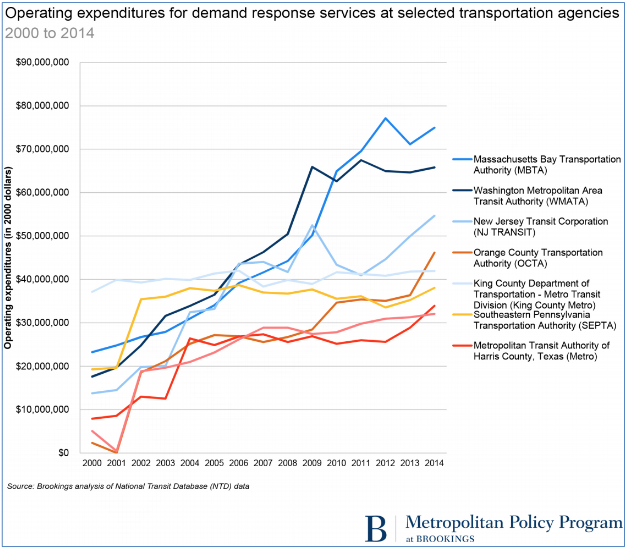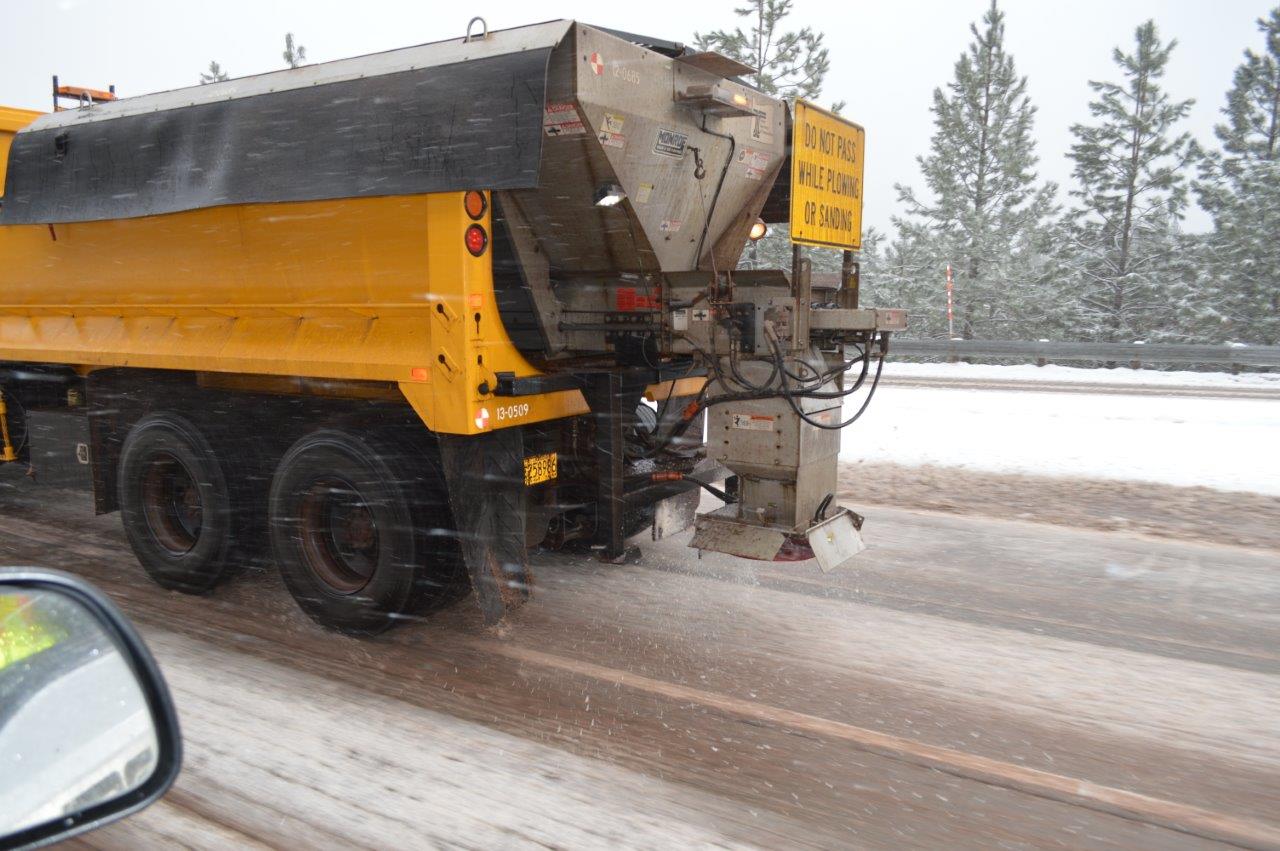
Paratransit service for people with disabilities is a big part of what modern transit agencies do, and it's getting bigger all the time. As the population ages and more people rely on paratransit to get around, agencies need to get smart about how they provide the service -- or else rising costs will eat into their capacity to run buses and trains.
A new report from the Rudin Center for Transportation at NYU lays out how to provide quality paratransit service without breaking the bank.
The 1990 Americans with Disabilities Act required cities to provide paratransit service for residents with disabilities but provided no operating funds. Nationally, paratransit now accounts about 12 percent of transit budgets, according to the report. It typically costs far more to operate than bus or train service -- the national average is $29 per paratransit trip, compared to a little more than $8 per trip for fixed-route services.
The Rudin Center report explores how transit agencies can reduce costs while simultaneously improving service for paratransit users. Here are the four main recommendations.
1. Partner with ride-hailing services
Contracting with taxi services or ride-hailing companies like Uber and Lyft could benefit both transit agencies and paratransit riders.
Currently, paratransit riders typically have to book rides 24 hours in advance. Partnerships with ride-hailing companies could lead to much more flexible, responsive service at lower costs. Shifting trips to for-hire vehicle service has already helped New York's MTA rein in escalating paratransit costs, for instance.
Transit agencies could also benefit from the systems that companies like Uber and Lyft use to match riders and destinations. At many agencies, employees do this manually -- and inefficiently. The Rudin Center suggests agencies contract with ride-hailing companies to use their trip-matching software.
2. Modernize ride reservation and fare payment systems
Digital technologies can make paratransit services more user-friendly, better organized, and less costly. For starters, the Rudin Center says, transit agencies should make it possible for riders to book rides and pay fares online, not just by phone.
While phone reservations will still need to be an option, mobile apps or even wearable devices (in Barcelona, seniors use necklaces to book rides) can streamline the paratransit service experience for riders and cut administrative costs.
Fare payment can also be modernized. Most agencies currently make riders pay with cash or a paper voucher, which creates more work for drivers and makes the farebox more vulnerable to theft or loss. The Rudin Center says transit agencies should go digital by letting people pay through an app or farecard.
3. Provide real-time information
Paratransit riders should have access to real-time information about when a vehicle is expected to arrive and the status of a reservation. Screens inside vehicles can also provide useful real-time information, like whether there are any delays on connecting transit routes.
Riders should also be able to rate the service they receive, the Rudin Center recommends, enabling agencies to assess performance and customer satisfaction.
4. Right-size vehicles
Most paratransit riders are "ambulatory" -- they don't use wheelchairs and don't need specially equipped vehicles. Large vans are still useful for all types of riders when several trips can be combined. But for ambulatory passengers making solo trips, smaller vehicles should be dispatched.





